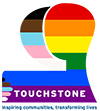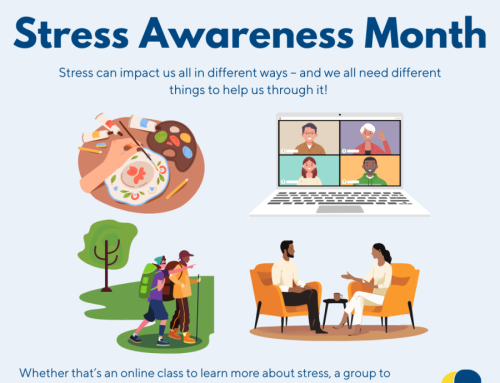Click on the video above to listen to the audio version of the below blog.
What are gender identity, gender expression and biological sex?
- Gender identity is an individual’s sense of their own gender. Their internal sense of being a man, a woman, both, neither, something in between, or something else entirely, irrespective of their biological sex.
- Gender expression refers to the way a person shows their gender externally, typically through their appearance, dress, and behaviour. People choose to express their gender identity in different ways at different times.
- Biological Sex is a socially constructed system which recognises two sex categories, male and female. It classifies people based on their biology, such as their external and internal sex organs, chromosomes, hormones, and secondary sex characteristics (e.g. facial hair). In reality, human biology is more diverse than this system allows for. Intersex people are an example of this.
What about sexual orientation?
Sometimes sexual orientation can get confused with gender, but they are not the same thing. Sexual orientation refers to a person’s attraction to another person based on a desire for sexual intimacy. It is important not to make assumptions about sexual orientation based on pronouns, gender identity, or expression.
What are pronouns?
When we talk about other people, we often use pronouns to refer to them, whether we realise it or not. A pronoun is a word which replaces a noun, such as a person’s name, in a sentence.
For example: I went to see a horror film with Sarah. She jumped at all the scary bits so it’s a good job I went with her. After the film, Sarah drove us home in her car and bought herself a pizza for dinner.
In English speaking societies there are strong associations between pronouns and gender – “he” with men and “she” with women.
However, not all men use “he” pronouns, and not all women use “she” pronouns. There is also no specific set of pronouns used for those who are gender non-conforming or non-binary. But most people who are non-binary ask for “they” pronouns.
For example: I went to see a horror film with Sam. They jumped at all the scary bits so it’s a good job I went with them. After the film, Sam drove us home in their car and bought themself a pizza for dinner.
The best thing to do is ask someone what their pronouns are, or use they/them pronouns if that is not an option.
If you don’t know what your gender identity is or you are questioning your identity, this is totally OK! Some people may not want a label and may never have one.
Equally, if you don’t want to give your pronouns this is OK! What is important is that we give everyone the choice and opportunity to share their identity and the pronouns that are right for them.
What about grammar?
Using they/them pronouns in the singular is not grammatically incorrect. Language is what we make it, and it is constantly evolving as we adjust our use of it.
If that isn’t enough to convince you, you can read here to find out about the use of they/them pronouns in the singular by Shakespeare and other writers.
Why do pronouns matter?
When we use pronouns to refer to people, we can unwittingly make assumptions about their gender identity. If this is someone we have never met before, or don’t know well, we may be misgendering them by choosing a pronoun based on their name or appearance, as opposed to using the pronouns they feel are right for them. This sends a harmful message: that people have to look or behave a certain way to demonstrate their gender.
Because of this, using the correct pronouns can help some people because it tells them that they are being perceived and referred to in a way that feels right for them.
If we choose to ignore a person’s pronouns, or repeatedly make mistakes without taking the time to learn and improve, we are ignoring and invalidating that person’s identity. Using someone’s correct pronouns is a bare minimum way of showing respect.
A Stonewall report from 2018 found that, in the previous year, almost half of trans people had thought about taking their own life, and forty-one per cent of non-binary people had harmed themselves. Using the right pronouns is one simple step we can take to protect the mental health of our trans and non-binary friends, colleagues and clients.
What else can I do?
There are lots of practical things that we can all do to be inclusive in using and respecting pronouns:
- Keep educating yourself – Language and Pronouns | Gendered Intelligence is a good place to start
- Update your e-mail signature to include your pronouns
- Update your Zoom screen name – there are instructions here: Customizing your profile – Zoom Help Center
- Update your Microsoft Teams status message to include your pronouns – there are instructions here: Set your status message in Teams – Office Support (microsoft.com)
- If you are facilitating a meeting, it is good practice to ask attendees for pronouns as part of the introduction
- Share your pronouns when introducing yourself at the start of meetings
- Get used to asking people about their pronouns – it might feel uncomfortable at first, but it’s far better than making hurtful or damaging assumptions
- Practice! If you’re having trouble getting used to someone’s pronouns, it’s your responsibility to practice and improve. You could use this resource to help you practice using they/them pronouns – https://touchstonesupport.org.uk/how-to-practice-using-they-them-pronouns/
- If you make a mistake, apologise, correct yourself and quickly move on
- If you hear someone using the wrong pronouns, correct them (make sure you have consent to do this from the person being referred to)
By Ruth (they/them pronouns) and Sarah (she/her pronouns)





